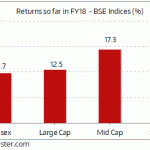
China has been weak for some time, and the main reason for its current weakness boils down to its loss of a major source of growth – cheap manufacturing labor.
It was this advantage – coupled with enormous amounts of new capital – that drove double-digit economic growth for almost a decade.
But while China’s wages are increasing at a 10% annual clip, Vietnam, Indonesia, and the Philippines (among others) have substantially lower wage costs. So it’s no surprise that capital is now flowing to these countries instead of China.
In fact, the surprising truth is that in 2014 and 2015, there was more foreign direct investment in all of Southeast Asia than in China. This was a startling indicator that many have missed.
Another theme many have overlooked is that the much talked-about “Pacific Century” isn’t just about Asia. It also includes the other side of the Pacific Rim – Canada, the U.S., and Latin America.
This is why all these countries are included in the Trans-Pacific Partnership trade deal that is stuck right now in the gridlock between Congress and the presidential campaign.
Meanwhile, another pro-growth, pro-market grouping in Latin America has also recently been launched – the Pacific Alliance. Chile, Colombia, and Peru have joined together with Mexico to form this Pacific Alliance trading block.
The contrast between the Pacific Alliance countries and the others in the region is clear. Over the past five years, these countries have had a 3.6% lower inflation rate than the average for Latin America. They also had a 1.5% higher growth rate and invested 2.5% more of their GDP.
And Mexico, with lower manufacturing labor rates than China, has an opportunity to be the next global manufacturing platform – especially if it pursues the right market reforms.
America, Mexico, and China
With China losing its manufacturing mojo, America will gain in several ways:













Leave A Comment